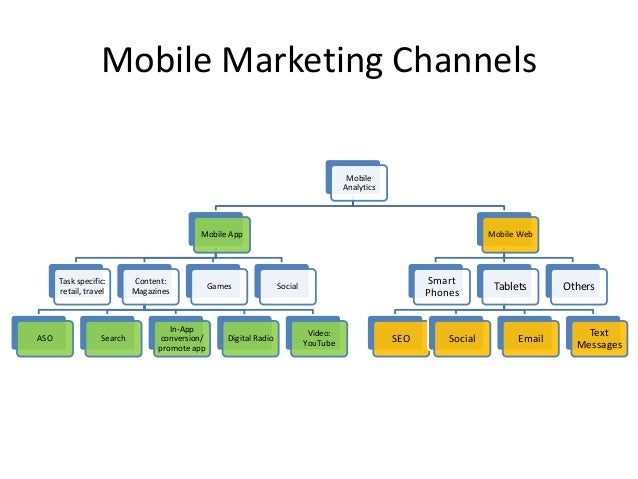3 Most Important Mobile Marketing Channels
Whether you have a mobile app or a mobile website, these channels can help your target audience find your mobile presence.

Estimates from eMarketer indicate that the population of mobile social network users will reach 79 million by 2015, which would result in mobile adoption rates that crush other technological adoption rates of the past. As with any new tech platform, organizations need to understand how to participate in and be found via mobile channels. Whether you have a mobile application or a mobile webpage, here are the top three channels that can help your target audience find your mobile presence:
location based service: Location-based services (LBS) use real-time geo-data from a mobile device or smartphone to provide information, entertainment or security. Some services allow consumers to "check in" at restaurants, coffee shops, stores, concerts, and other places or events.
Location-based services (LBS) use real-time geo-data from a mobile device or smartphone to provide information, entertainment or security. Some services allow consumers to "check in" at restaurants, coffee shops, stores, concerts, and other places or events.
Two-dimensional (2D) barcodes. Two-dimensional (2D) barcodes look like squares or rectangles that contain many small, individual dots. A single 2D barcode can hold a significant amount of information and may remain legible even when printed at a small size or etched onto a product.
Mobile Organic Search
A recent study by Google found that a smartphone was the most common starting point for online activities. It's crucial to show up at the top of organic search on mobile devices, because 65 percent of the study participants started with a mobile device when searching for information, as well as shopping, online.
The best way to optimize your website for a mobile device is to create what is known as a responsive website. A responsive website will auto-detect the visitor's device prior to serving up the website content. Upon detection, CSS will then tailor the website content to the specific device. Responsive websites will reduce clutter and avoid duplicate content issues that may arise from duplicating website content on a mobile subdomain such as m.yourdomain.com.
Marketers can also monitor performance using the mobile search data segment in Google Webmaster Tools. Use this tool to monitor the results of your mobile search optimization.
Mobile Content Marketing
The goal of content marketing is to create target-market-oriented content that informs, entertains, provides value, and inspires sharing. It's important to consider context when creating content for different devices. The same Google study mentioned earlier found that smartphone use is primarily motivated by communication and entertainment activities. By contrast, PCs are the most common starting point for more complex activities like planning a trip or managing finances.
It's important to serve the needs of your target market within this large mobile user group with content crafted with a mobile context in mind. For example, launching complex content such as a research paper or interactive survey wouldn't be valuable in a mobile context. Focus on content ideas that support communication, fact references, or entertainment. Be sure to always post mobile-friendly content using HTML and CSS rather than Flash or JavaScript.
The Google Keyword Tool also allows for mobile device segmentation, which can provide keyword research insights for targeting mobile users. Combine the most popular mobile search trends with top-performing activities in mobile such as social networking, informational search, and shopping online. This kind of focus will start you down the path to content built for success on mobile devices.




No comments:
Post a Comment